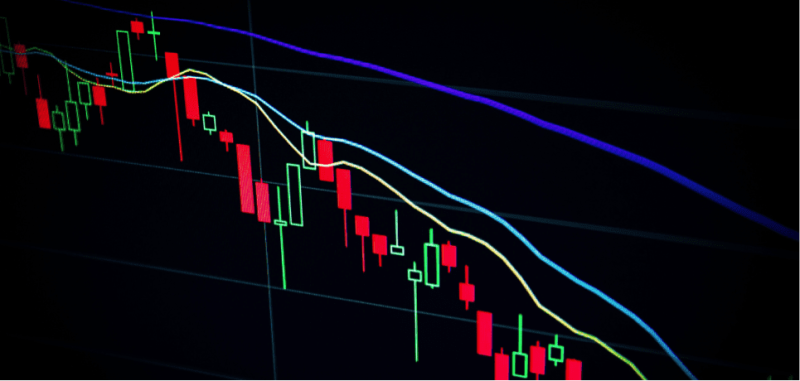We all like to make fun of unfulfilled predictions by meteorologists, but maybe those in the trading realm should hold back their ridicule since day traders and weather prognosticators aren't that different. Like meteorologists, day traders are constantly scouring for signals and patterns that could imply a change is about to come.
Any of us can look outside our windows and speculate that today's weather will resemble yesterday's. Predicting the weather, however, requires figuring out exactly when the change should be expected – much like traders analyzing price charts using signals and patterns.
One of these signals and patterns that day traders look for in financial markets is the rounding bottom pattern. Easily one of the most profitable chart patterns available today, the rounding bottom pattern usually indicates a trend reversal has begun.
Below, we'll review everything you'll need to know about this long-term reversal chart pattern, including how you can efficiently trade it in a live market. First, let's nail the basics.
Also Read: What Is the Triple Bottom Pattern
Contents
- What Is A Rounding Bottom Pattern
- How Does The Rounding Bottom Pattern Form?
- How Does Volume Play Into The Formations?
- How Does The Rounding Top Pattern Form?
- Step-by-Step Guide To Trading The Rounding Bottom Pattern
- Example of a Rounding Bottom Trade Pattern
- Benefits of Trading The Rounding Bottom Chart Pattern
- Final Thoughts
What Is A Rounding Bottom Pattern

A rounding bottom is a classical price chart bullish pattern identified by a series of price movements that graphically form a “U” or bowl-like appearance. Note that these pattern forms appear at the end of extended downward trends, right before a new upward trend begins to form. That's why it's also referred to as a trend reversal pattern.
Regarding the period this rounding bottom pattern formation takes to manifest, expect it to vary from several weeks to several months. It's a rare occurrence for those who trade weekly charts or anything above the 4-hour time frame.
Also, in ideal rounding bottom pattern scenarios, volume and price will occur in tandem, where volume perfectly reflects the price action. More on this in the next section.
How Does The Rounding Bottom Pattern Form?
For a rounding bottom pattern to form, the price creates an initial declining slope. After the temporary downward trend, it begins its bottoming phase, where you'll being to see the price move sideways or consolidate for a little while. It'll create the “U” or bowl-like appearance we mentioned earlier during this phase.
Next, the price breaks out of the consolidation and starts making moves higher until it hits the neckline. The neckline is the point where the downward trend started from. It's usually the resistance point of the trend.
In fact, in most rounding bottom pattern cases, the price will tend to start declining or face some sort of consolidation at said level.
Note: while you can trade the rounding bottom pattern on all time frames, most experts will only identify and trade it on higher time frames, like the daily charts. These higher time frames give traders greater market clarity and also help investors analyze potential trade entry levels on lower time frames, like the 1-hour and 30-minute.
How Does Volume Play Into The Formations?

As usual, like with all other classical trading patterns, volume plays a key role in the formation of the rounding bottom pattern. At the beginning of the initial downtrend, the volume will (ideally) be higher than average. It should then decline as the price slows down and creates the bottom.
The volume should, again, start increasing as the uptrend begins. The last volume confirmation you need is a high-volume breakout from the rounding bottom pattern's neckline.
How Does The Rounding Top Pattern Form?
The market sentiment behind the formation of rounding top patterns is inverse to that of a rounding bottom chart pattern. At the beginning of the pattern's formation, the price starts to rise. The reason? Sellers aren't showing any interest in the stock.
As the price keeps rising, however, buyers start getting nervous, while sellers begin showing interest in the underlying stock. This reduces the pace at which the asset's price is rising. As more bulls leave and bears jump into the market, the price stabilizes for a brief time.
Once sellers overtake the buyers, the stock price starts to fall. The sellers' willingness to short the stock at a “high price” point starts a downtrend.
Also Read: Trading using Double Top pattern and Double bottom pattern
Step-by-Step Guide To Trading The Rounding Bottom Pattern
Now that you're familiar with the rounding bottom pattern, it's time to take a deep dive into how you can trade one every time you spot it.
Step 1: Confirm the Formation of the Rounded Bottom Pattern
As we noted earlier, to confirm the pattern, you'll need to find a temporary downward trend that slowly transforms into a range pattern, followed by a slow but sure price increase. Remember, the strongest rounded bottom patterns are confirmed by volume indicators.
Your preferred volume indicator should show high volume on the downward trend, flat volume levels during the range formation, and rising volume levels on the reversals' onset.
Step 2: Identify the Rounding Bottom Pattern's Neck Line
Once you've confirmed the successful rounded bottom pattern formation, draw the neckline. To do that, draw one horizontal line across the top of the bullish and bearish sides of the rounding bottom pattern.
Step 3: Wait For The Breakout
The breakout will happen once the price penetrates the neckline you drew above. The penetration should happen in the bullish direction. To further validate these price breaks, the stock price should show sufficient strength as it crosses above the neckline resistance level.
A decisive breakout will display itself in several forms, including increased volume and price candlestick expansion.
Step 4: Enter the Trade
Once all your confluences have been confirmed, look to place a long trade immediately after the stock breaks through the neckline as described above.
Step 5: Place Your Stop Loss
Ask any seasoned trader, and they'll tell you that you should never trade without a stop loss. While the rounded bottom pattern is arguably the most reliable long-term reversal pattern, that doesn't mean you shouldn't take the steps necessary to protect your capital. After all, no single thing is 100 percent in the trading realm.
So, now that you're sufficiently cautioned (and hopefully a little scared), let us talk about tricks you should employ while trading this bullish reversal pattern. Most traders' go-to option is to place their stop loss at the midpoint of the pattern.
If that's too much exposure for you and you would like a more conservative approach, I'd recommend placing your stop loss below the breakout candle's low. This way, if the pattern fails to bear fruit, you can speedily exit the position and start scouring for better opportunities.
Step 6: Determine Your Profit Targets
As a general rule in the financial markets, you want a profit target that's at least equal to the amount you're risking, also known as a 1:1 target ratio. Rounding bottom formation patterns are way better in that they allow you to target up to 2 times the amount you're risking.
Your minimum profit targets anytime you trade the rounding bottom should be equal to the size of the pattern formation from the neckline. Basically, measure the number of points from the neckline to the furthest point the price went in its downtrend before reversing and creating the new bullish trend. Next, use the same points as your profit target.
Also worth noting is don't be greedy once your target is hit. Consider exiting the position right away. That's particularly true if the price shows signs of weakness and/or consolidation.
Example of a Rounding Bottom Trade Pattern

The chart above shows gold's chart from 1997 through 2021. The image illustrates a perfect rounding bottom chart pattern in action, where we would've gone long on the breakout above the $2,000 price level.
Major Mistakes Traders Make
One of the main errors most trades make when using the rounding bottom reversal chart pattern is placing their trades too early before the strong break through the neckline level has been confirmed.
The trade isn't truly validated until this neckline, currently acting as the resistance level, is breached, which implies that the previous decline in price has been abandoned entirely and buyers have started catapulting the price to new, bullish sides until a higher, stronger resistance level is reached.
Benefits of Trading The Rounding Bottom Chart Pattern
There are several benefits to trading rounding bottom patterns. These include:
- Easy Stop-Loss and Take-Proft Determination
The take profit and stop loss levels on rounding bottom pattern trades are extremely easy to determine and place, unlike what you'll find in most other patterns.
- Accuracy
The rounding bottom pattern is easily one of the best accurate market formations one can use in the market.
- Easy to See
This pattern can be identified visually, meaning one won't need to use any tools to draw it out. Even total beginners in the realm of day trading can pick out this pattern on a chart.
- Visual Resemblance To The Cup and Handle Pattern
Both the rounding bottom and rounding top chart patterns closely resembles the cup and handle pattern. The only difference between the two is that the rounding bottom and rounding top are trend reversal patterns, whereas the cup and handle are continuation patterns.
Regarding the disadvantages of trading the rounding bottoms, the only one I can think of is that they take way too long to form.
Final Thoughts
Most new traders may be unaccustomed to using long-term chart patterns, such as the rounding bottom pattern, but these round bottom formations are extremely useful for spotting changes in the price trend. You, the day trader, can then use the most appropriate short-term patterns and indicators (like pennants and volumes, respectively) to validate the trades.
What's more? Day traders should be cautious when trading chart patterns with the rounding bottom pattern because it's easy for new traders to see it everywhere or execute it prematurely. Ensure you find the key defining details of a rounding bottom pattern, and wait until the neckline level has been decisively broken before entering a trade.

















